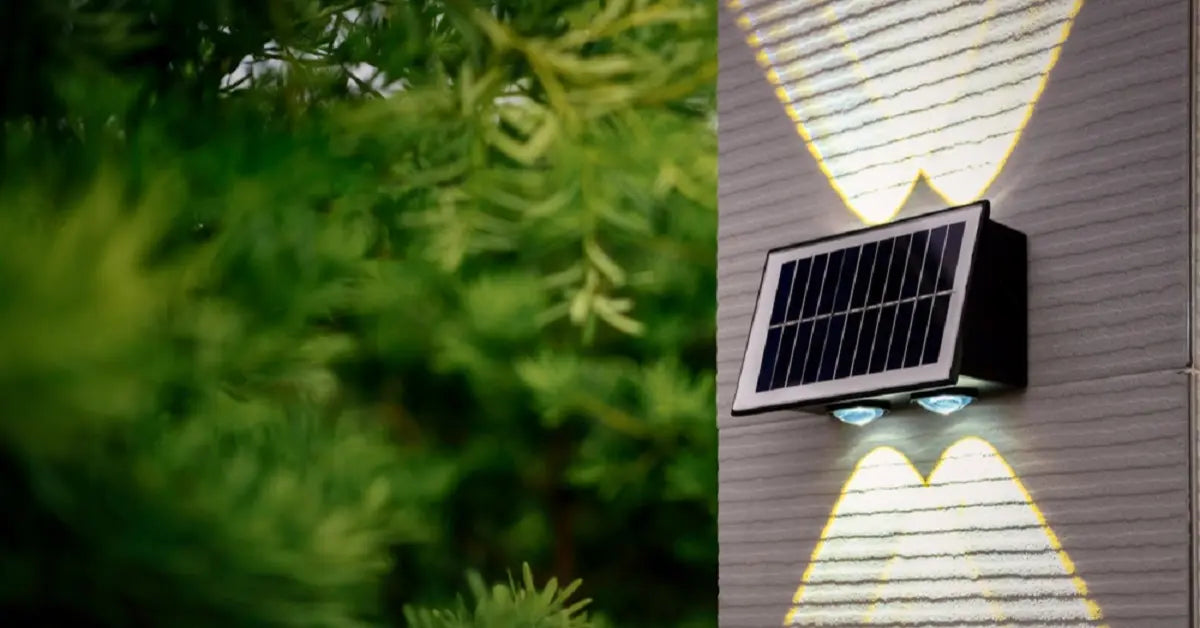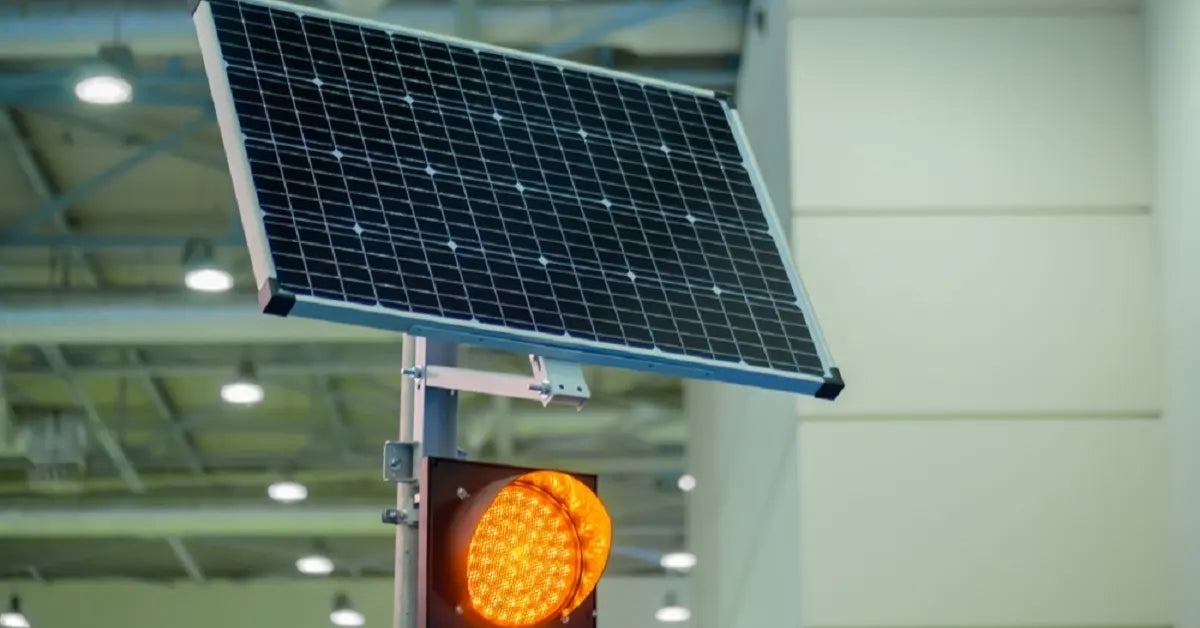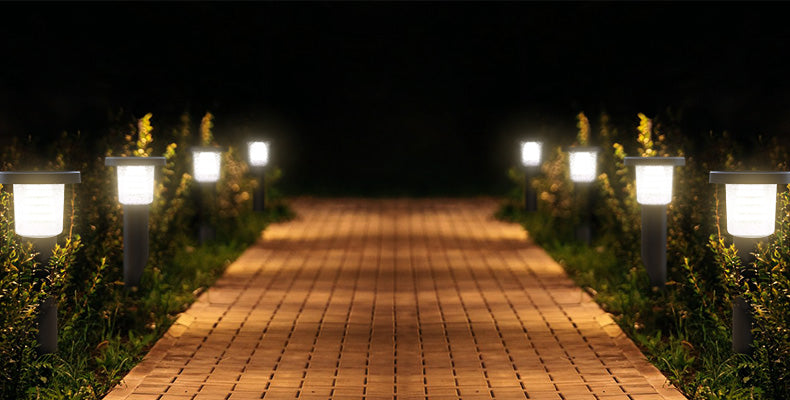I get it. Your solar light just stopped working, and you're staring at a pack of regular AA batteries in your drawer. The question running through your mind is simple: "Can I just pop these in and call it a day?"
I'm here to give you the straight answer—and trust me, it's important. Let's talk about why using the wrong battery isn't just ineffective. It can actually destroy your solar light permanently.
The Critical Answer: Can You Use Regular Batteries in Solar Lights?
No, you should not use regular batteries in solar lights. Here's why this matters.
Standard alkaline batteries (the ones you grab at the checkout counter) are non-rechargeable. Their chemical composition simply wasn't designed to handle the charging cycle your solar light creates every single day. When your solar panel tries to recharge an alkaline battery, things go wrong fast.
We're talking overheating, leakage (what I call "alkaleaks"), corrosion that eats through your terminals, and permanent damage to the light's circuitry. Solar lights are specialized systems built specifically for rechargeable chemistries like NiMH or Lithium-Ion. Anything else is asking for trouble.
Why Regular Batteries Don't Work in Solar Lights
Let me break down exactly why alkaline batteries and solar lights are a terrible match.
Incompatibility with Solar Charging Systems
Solar lights operate on a daily cycle. Every morning, the sun hits your panel and converts light into electrical energy. That energy flows into the battery, storing it for nighttime use.
This cycle requires a battery designed to be charged hundreds—even thousands—of times. Alkaline batteries? They're single-use only. The moment your solar panel starts pushing electricity into them, you're forcing a chemical reaction that was never meant to go in reverse.
Increased Risk of Leakage and Corrosion

Here's where it gets messy—literally. When alkaline batteries are subjected to charging attempts or deep discharge cycles, they leak.
That white, crusty substance you sometimes see? That's potassium hydroxide, and it's highly corrosive. It destroys battery terminals, corrodes the compartment, and can render your entire solar light useless. I've seen lights that look like they've been attacked by acid—all because someone used the wrong battery type.
Reduced Light Output and Unstable Performance
Even if your light manages to power on with regular batteries, the performance will be disappointing. Alkaline batteries don't provide the consistent voltage or sustained power that solar light circuitry needs.
You'll notice dimmer illumination, frustrating flickering, or sudden power drains. Your light won't achieve the brightness it was designed for. It's like trying to run a marathon in dress shoes—technically possible, but you're setting yourself up for failure.
What to Use Instead: Choosing the Right Rechargeable Battery
Now for the good news: using the right battery type makes all the difference. Let me walk you through your best options.
NiMH (Nickel-Metal Hydride)
This is your most common replacement option, and for good reason. NiMH batteries offer high energy density and solid efficiency. They're environmentally friendly compared to older technologies and typically last around five years.
The catch? They can overcharge in high temperatures. If you live in a hot climate, keep an eye on battery health during summer months.
NiCd (Nickel Cadmium)
These are the budget-friendly option. NiCd batteries perform exceptionally well in cold temperatures, making them ideal for northern climates. They're generally less expensive upfront.
However, they have a shorter lifespan (2-3 years) and contain toxic cadmium. This makes disposal more complicated and less environmentally responsible. I consider these the "acceptable but not ideal" choice.
Lithium Options (Li-ion/LiFePO₄)

This is where we enter premium territory. Lithium Iron Phosphate (LiFePO₄) batteries are the gold standard for solar applications. They offer exceptional stability, superior safety profiles, and the highest energy capacity.
The real win? Longevity. We're talking 5-6 years of reliable service, often exceeding 2,000 charge cycles. Yes, they cost more upfront, but the long-term value is undeniable.
Beyond the Basics: Understanding a Solar Light as a Complete System
Here's something most people don't realize: a solar light isn't just a light with a battery compartment. It's a carefully balanced ecosystem where every component is designed to work in harmony.
Battery Chemistry 101: Why Rechargeable is Different
Let's get technical for a moment—but in plain English. Rechargeable batteries like NiMH and LiFePO₄ are engineered at the molecular level to handle constant cycling of energy storage and release. Their chemistry allows electrons to flow in both directions repeatedly without degrading the structure.
Alkaline batteries? Completely different story. They generate energy through an irreversible chemical reaction between zinc metal and manganese dioxide. Once that reaction depletes, it's done. There's no "reversing" it safely, which is exactly what your solar panel tries to do every day.
The Importance of Matching Voltage (1.2V vs. 1.5V)
Here's a detail that matters more than you might think. Most solar lights using AA or AAA cells are designed for the 1.2V nominal voltage of NiMH or NiCd rechargeable batteries.
Regular alkaline batteries operate at 1.5V. That might seem like a tiny difference—just 0.3V—but it's significant. Consistently feeding your solar light's sensitive control circuit with higher voltage than intended stresses the components. Over time, this can lead to premature failure of the entire system.
It's like constantly revving your car engine above the recommended RPM. Sure, it'll run, but you're shortening its life with every use.
Want to dive deeper into battery fundamentals? Check out our in-depth guide on why solar lights need batteries to understand their essential role in the system.
Starting with a Superior System: The Key to Long-Term Reliability

Let me share something I've learned from years in the solar lighting industry: the best way to avoid battery problems is to start with quality components from day one.
The Advantage of a High-Quality LiFePO₄ Battery
LiFePO₄ (Lithium Iron Phosphate) batteries represent the pinnacle of current solar battery technology. Their exceptional stability and safety profile set them apart from every other chemistry available.
But here's what really matters to you: longevity. These batteries routinely exceed 2,000 charge cycles, translating to 5-6 years of reliable use. When you calculate cost-per-year, they're actually more economical than constantly replacing cheaper batteries.
Ensuring a Healthy Charge with an Adjustable Panel
Even the best battery in the world can't perform without proper charging. This is where panel adjustability becomes crucial.
An adjustable solar panel lets you optimize sun reception throughout the day and across seasons. You can angle it to capture maximum sunlight, ensuring your battery receives a full, healthy charge every single day. This prevents the chronic undercharging that silently destroys battery lifespan over time.
Consider a well-engineered solar security light like Intelamp's 1300LM floodlight. It comes equipped with a superior 4000mAh LiFePO₄ battery and an adjustable panel designed to maximize that battery's health from installation day. It's a complete system where every component supports the others—exactly how solar lighting should work.
Explore Outdoor Lights Designed for Durability

Quality matters. When you're investing in outdoor illumination, look for lights built with proper rechargeable components and advanced solar technology from the ground up.
Ready to see what difference quality components make? Explore a full range of solar outdoor lights engineered for long-term reliability and consistent performance.
FAQs
Let me address the questions I hear most often about solar battery compatibility.
Do I need special batteries for solar lights?
Yes, absolutely. Solar lights require rechargeable batteries specifically engineered to handle frequent charging and discharging cycles that occur daily.
The typical chemistries you'll encounter are NiMH, NiCd, or the longer-lasting Lithium variants like LiFePO₄. Each has its strengths, but they all share one critical feature: they're designed to be recharged repeatedly without degradation.
Can I put a regular AA battery in a solar light?
I strongly advise against this. Yes, a regular alkaline AA battery will physically fit in the compartment. It might even power the light temporarily if you're just testing functionality.
But the moment your solar unit tries to recharge that battery, you're risking serious damage. The non-rechargeable alkaline cell can leak, corrode the terminals, or permanently damage the charging circuit. It's not worth the risk for a temporary test.
Can we use a normal battery as a solar battery?
No. A normal (alkaline) battery is a disposable, single-use power source. It has no ability to store the electrical charge that your solar panel generates.
Using one in a solar application doesn't just mean poor performance—it risks complete system failure. The chemistry simply wasn't designed for this use case.
Can batteries in solar lights be replaced?
Yes, and they should be! Batteries in solar lights must be replaced periodically as they naturally degrade over time.
Typical replacement schedules look like this: NiCd and NiMH batteries every 1-2 years, while LiFePO₄ batteries can last 5-6 years. Replacing the battery is actually the most cost-effective way to restore your light's performance and brightness. It's far cheaper than buying a new light entirely.
The Bottom Line: Choose the Right Battery, Enjoy Years of Light
Using regular batteries in solar lights isn't just ineffective—it's potentially destructive. The right rechargeable battery, properly matched to your solar system, makes all the difference between a light that fails in months and one that reliably illuminates your space for years.
Start with quality components. Understand the system. And when it's time to replace batteries, choose the chemistry that matches your needs and climate.
Your outdoor spaces deserve reliable lighting. Now you know exactly how to achieve it.
More Resources
Do Solar Lights Need Batteries? Yes—Here's Why (Complete Guide 2025)
How Long Do Solar Lights Last? Engineer's Guide to Durability (2025)



